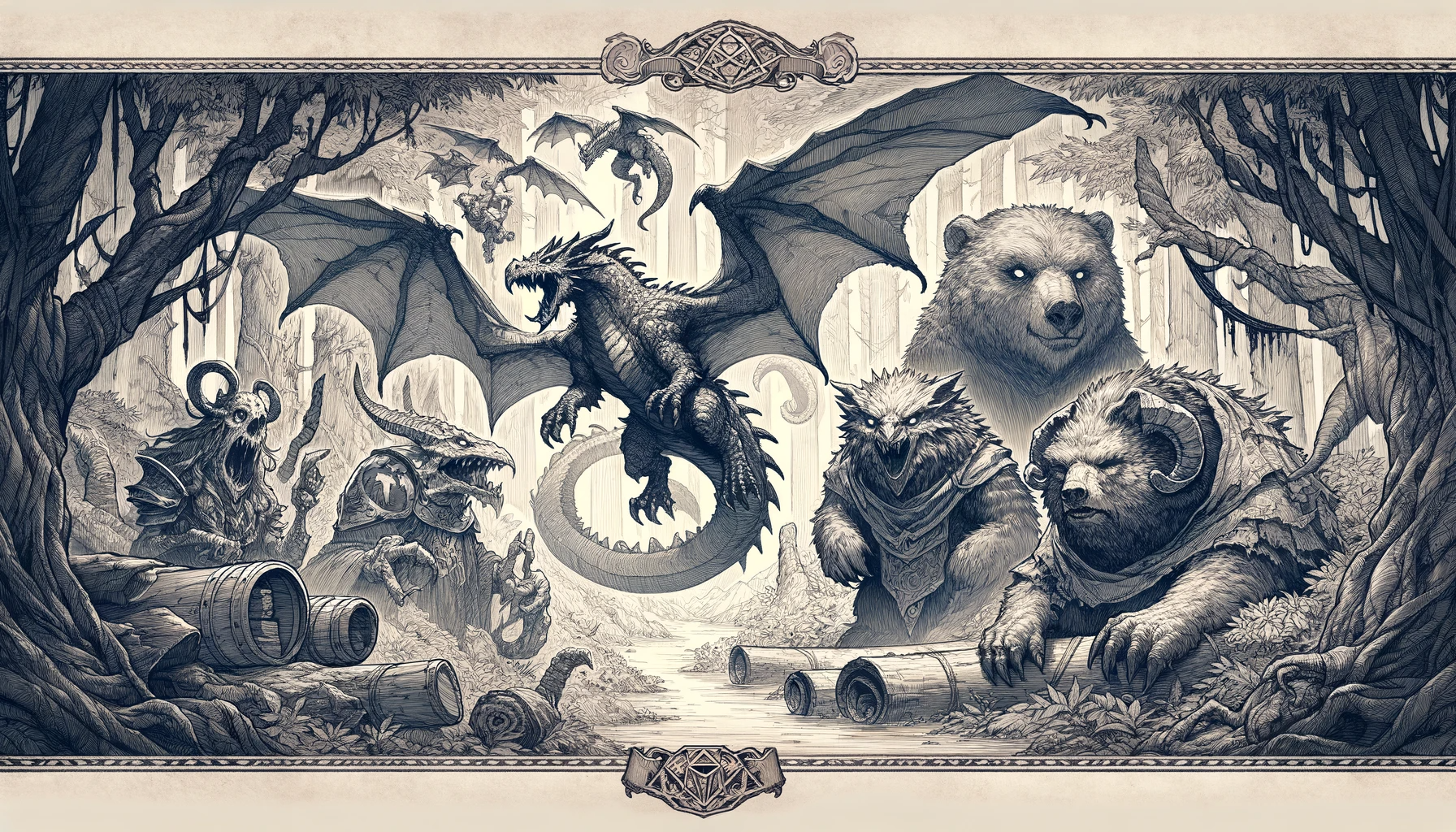Transmute Bone to Steel (AD&D 2E): Difference between revisions
No edit summary |
No edit summary |
||
| (2 intermediate revisions by the same user not shown) | |||
| Line 13: | Line 13: | ||
| SubField = | | SubField = | ||
| SourceShort = TSR2151 | | SourceShort = TSR2151 | ||
| SourceLong = [[ | | SourceLong = [[DMGR7 - The Complete Book of Necromancers (TSR2151)]], Page 59 | ||
| Vault = Yes | | Vault = Yes | ||
| Spell2E = Yes | | Spell2E = Yes | ||
| Line 21: | Line 21: | ||
The reverse of this spell, transmute steel to bone, weakens any metal by making it as brittle as dry bone (altering all saving throws appropriately). Each non-living recipient of this spell must make an item saving throw vs. disintegration. If failed, the former metal item makes all future saves as if it were fashioned from bone. Metal armour loses its effectiveness, becoming AC 7. Whenever a successful hit is made by or upon the item, the transmuted object must make a save vs. crushing blow to remain intact and functional. Magic items weakened by this spell remain magical, with any bonuses applied to their saving throws. Weapons affected by this spell inflict -2 hp per die of damage (and must save to avoid breakage whenever they hit a target). Physical attacks versus transmuted metal creatures inflict +2 hp per die of damage. The material components (for both versions of the spell) are steel filings and powdered bone. | The reverse of this spell, transmute steel to bone, weakens any metal by making it as brittle as dry bone (altering all saving throws appropriately). Each non-living recipient of this spell must make an item saving throw vs. disintegration. If failed, the former metal item makes all future saves as if it were fashioned from bone. Metal armour loses its effectiveness, becoming AC 7. Whenever a successful hit is made by or upon the item, the transmuted object must make a save vs. crushing blow to remain intact and functional. Magic items weakened by this spell remain magical, with any bonuses applied to their saving throws. Weapons affected by this spell inflict -2 hp per die of damage (and must save to avoid breakage whenever they hit a target). Physical attacks versus transmuted metal creatures inflict +2 hp per die of damage. The material components (for both versions of the spell) are steel filings and powdered bone. | ||
}} | }} | ||
[[Category:AD&D 2E Spells]] | |||
[[Category:Spells]] | |||
Latest revision as of 05:17, 11 July 2024
| Transmute Bone to Steel | |
|---|---|
| 6th Level Spell, Alteration, Necromancy (Reversible) | |
Range: 30 yards Duration: Permanent Area of Effect: 1 creature or object |
Components: V, S, M Casting Time: 1 round Saving Throw: Special |
| Description: A wizard casting this spell makes any object made of bone, including a skeleton, as strong as steel. The spell may be cast only upon dead, inanimate bones; after they have been transmuted, the bones may now be animated by the usual means. Despite their increased strength, the bones do not change in appearance, and they retain their original weight. Bone objects make all future saving throws as if they were hard metal (DMG, page 39). Transmuted skeletons now have AC 3 and take half the usual damage from physical attacks. However, these skeletons still take normal damage from holy water and magical attacks and are also subject to spells affecting metal {transmute metal to wood or heat metal) and the attacks of creatures that especially affect metal, such as rust monsters.
The reverse of this spell, transmute steel to bone, weakens any metal by making it as brittle as dry bone (altering all saving throws appropriately). Each non-living recipient of this spell must make an item saving throw vs. disintegration. If failed, the former metal item makes all future saves as if it were fashioned from bone. Metal armour loses its effectiveness, becoming AC 7. Whenever a successful hit is made by or upon the item, the transmuted object must make a save vs. crushing blow to remain intact and functional. Magic items weakened by this spell remain magical, with any bonuses applied to their saving throws. Weapons affected by this spell inflict -2 hp per die of damage (and must save to avoid breakage whenever they hit a target). Physical attacks versus transmuted metal creatures inflict +2 hp per die of damage. The material components (for both versions of the spell) are steel filings and powdered bone. | |
| Source: DMGR7 - The Complete Book of Necromancers (TSR2151), Page 59 | |
